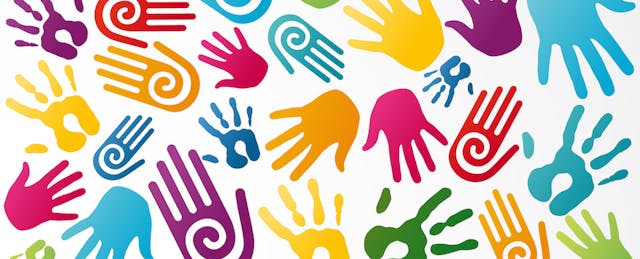Recently, I have been talking with teachers about their perspectives on the inclusion of women and people of color in making and maker education. These conversations have been both interesting and frustrating.
Although most of the educators I know who self-identify as makers are women, some of them cite a lack of women in STEM fields and related pursuits as the very reason they are now makers. They are trying to change the landscape by encouraging young women and girls to become makers also. When I speak with people of color with about making, some discuss the lack of diversity when attending maker events. They rarely, if ever, see themselves represented.
As a teacher and a woman of color, I am interested in shaping a Maker movement that reflects the diversity of people interested in creating, building, hacking, and tinkering. Here is how this can happen:
1. Affirm the making that already happens in classrooms.
Good teachers know that students can represent their learning in a variety of ways. There have been artistic and technical projects happening in classrooms for years; these apply subject area knowledge and involve many aspects of making.
A great example is the scale project one math teacher I know does with her 6th graders. Students choose a common object from which to build a giant scale model. I have seen cardboard and papier maché transformed into Wiimotes, pencils, and the final Harry Potter book—to name a few examples. The same ingenuity, inventiveness, whimsy and math that goes into creating the Cupcake Cars that buzz around the Maker Faire each year go into doing projects like these.
2. Use the most inclusive definition of making.
Many times people assume that making is just the arts of coding, physical computing, 3D printing, soldering, and the like. People who are involved in textile or culinary arts, for example, may not identify as makers, or can feel excluded from the Maker movement with its emphasis on STEM. Both students and non-STEM focused makers can benefit from using the most inclusive definition of making to design programs and supply spaces. For instance, my students are enthusiastic about Scratch, but find finger knitting just as compelling when it's offered during making and tinkering time.
3. Provide windows and mirrors.
In her research on getting girls of color interested in making, Nicole Pinkard, founder of the Digital Youth Network, has found that girls need to see young women who look like them involved in making and STEM activities in order to believe that they can get involved themselves. In other words, mirrors that reflect these girls' experiences are essential.
Likewise, other people in the Maker movement can benefit from having windows into more diverse making communities. There have to be intentionally created makerspaces that include a wide diversity of people and types of activities, so that makers of color do not continue to experience maker events as isolating and unrepresentative. Partnering with organizations like the California Alliance of African American Educators (CAAAE) or Teachers 4 Social Justice to sponsor and support events might highlight interests and abilities of teachers who are also makers and people of color.
Most of what I read about diversity in the making community is focused on how to involve more women in making. At the MakerEd Convening this month, I had the opportunity to speak with other makers of color who had an interest in developing and supporting more access, visibility and dialogue about people of color in making. I would like to continue this conversation, not just about women in making, but also about people of color in making. If you’d like to join me, please tweet @sztt or leave a Comment below.


